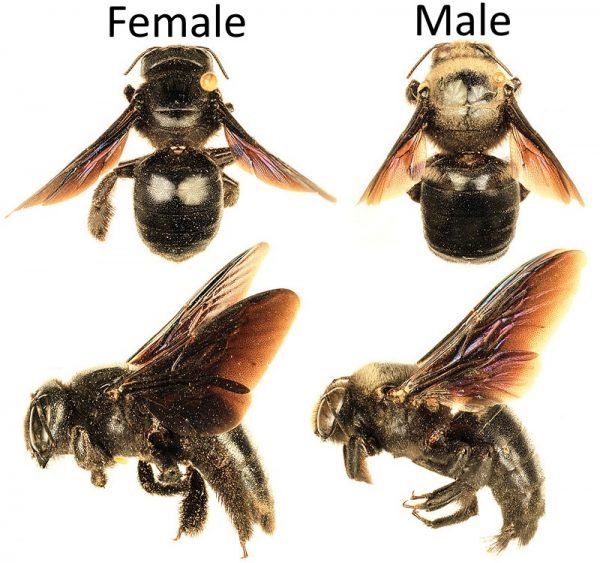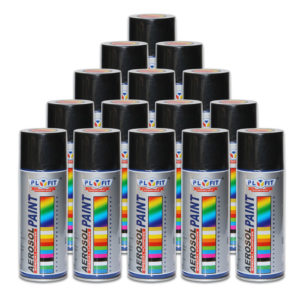How To Get Rid Of Carpenter Bees Inside and Outside Of Your House

Contents
How To Get Rid Of Carpenter Bees Inside And Outside The House?
An infestation of carpenter bees inside or outside of your home can be a cause of concern, but not because they are aggressive. The real threat is to the structure of the home, even though females may sting in rare situations. Bees are known to infest wooden structures that are typically worn and unpainted. Understanding the signs that there are unwelcome guests destroying your home can help you tackle the problem before it’s too late.
Signs of Carpenter Bees
If you happen to spot one bee in or around your property, there’s a good chance that they have plenty of friends hiding nearby. Their physical appearance is similar to a bumble bee, with more of a glossy look to their body. They may have some yellow sections on their body or face, but most of these insects are primarily dark in color. Similar to termites, it’s important to act immediately to get rid of the problem before structural damage becomes severe.
Entrance holes created in wood may be covered with yellow pollen and bee excrement. The tiny, circular entrance may be tough to spot without looking closely, but physical inspection should become a regular part of home maintenance. Check for sawdust on the ground beneath any holes for signs that there is an infestation. Males usually protect their dwelling by flying near the hole, so the sight of a bee may make it easier to find the entrance. They prefer to dwell within different types of soft wood that aren’t painted or protected with bark, but they may decide to excavate within old wood that has worn paint.
Safely Exterminating Indoor Bees
Eliminating an indoor infestation can be dangerous if chemicals are used to kill the bees. Professional exterminators can offer products that are safe to use around humans, yet effective against the pests. Spraying chemicals into the nest is sure to reach the majority of the insects before they can escape. It’s usually necessary to respray multiple times to ensure that any remaining bees are killed before they can rebuild in another location.
Physical removal offers the benefit of not introducing any chemicals around your family, but it can be a bit more complex. Homeowners have effectively removed the insects with a vacuum before sealing the entrance with a cork or caulking. The bees are repelled by paint, boric acid powder, and almond oil so people have also used these natural remedies to drive the pests away.
Bee Removal Outdoors
Insecticide dust is traditionally used in outdoor extermination efforts because it quickly kills the wood dwellers. When applied later in the evening, there is a greater likelihood that the female bees will be inside the nest. Earlier in the day they are more likely to attack or be away from the nest gathering pollen. The entrance hole should be plugged within a couple of week after the extermination to prevent a re-infestation, and additional dust should be added at the start of each new season. Plugging too early can create new issues because living bees inside may try to chew their way out by creating a new hole, and bees outside of the nest will not have a chance to come in contact with the poison.
Fresh paint and spray insecticide applied to outdoor wood surfaces effectively repels bees if you know that your home is susceptible to infestations. Pay special attention to wooden fences and posts in addition to the main structure because the bees will look for any source of soft wood.
Protecting Your Home From Re-Infestation
After bees have been effectively removed from the inside or outside of your home, it’s essential to properly seal the hole. Females aren’t known to create new nests, but they will search for old openings to refurbish as a new home. It only takes one single bee to deposit a food ball before laying the eggs that begin the new life cycle.
Apply a fresh coat of exterior paint every few years, or sooner if the protective layer seems to be wearing away. Replace any wood at the first sign that it has become worn or damaged so that bees are unlikely to take up residence on your property.
Getting Professional Help
Don’t hesitate to hire a professional, especially if you want to work with insecticides without putting yourself in danger. They can provide additional solutions to quickly eliminate the pests and prevent them from returning in the future.
Homeowners that decide to take on the task of removing their own bees do run the risk of poor results. More damage is going to occur the longer an infestation is not under control, especially if you incorrectly assume that the bees are gone. An experienced exterminator understands the habits of carpenter bees and can eliminate the problem without any trial and error.
Non Toxic Spray

This non-toxic spray kills larvae, eggs, and adult insects by breaking down their exoskeleton. It is safe to spray around the home and works only on the insects. Feel good about spraying indoors around pets, plants and children.
All Natural Non Toxic Insect Killer Spray by Killer Green
